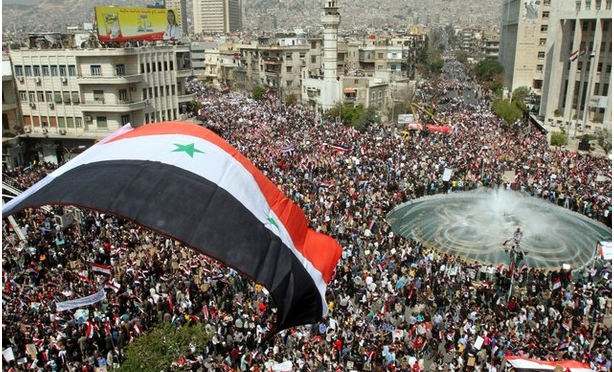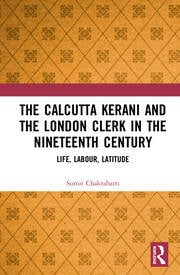Arab Spring: Revisiting the Syrian Chapter
Posted on : November 4, 2019Author : AGA Admin

The North African and Middle Eastern uprisings were in a general senseinitiated by “varying combinations of political authoritarianism, economic deprivation and social disintegration”, which left the populace increasingly marginalized, vulnerable, affronted and degraded. Even if they were linked to the wider processes of global politics and economics, there were specific local dynamics that could not be merely interpreted as the direct consequence of globalisation and imperialism. The Arab revolutions, since its initial stages were revolutions without specific “promises and assertions.” They were revolutions professedly against subjugation and bias more than they were revolutions aimed at implementing deliberate programmes and notions. In Walter Benjamin’s words, these were “revolutions nourished by the image of enslaved ancestors rather than that of liberated grandchildren.” Possibly, the revolution that took place in Syria was unique in the sense that the revolutionaries were in essence “subalterns”, those without a voice and who could not communicate with the global audience.
Syria is torn between the ruling Alawites, an outgrowth of the Shia sect (albeit with significant differences, to the extent that each does not accept the other as a faith/religion) and the majority Sunni population. Since 1970, Hafeez al-Assad and his regime adeptly employed religious and ethnic sects and sectarianism in Syria as well as Lebanon to consolidate their rule, stimulating sectarian tension but keeping them under adequate control so as to justify the requirementfor this rule, reinstating that “things would get out of control and the country would descend into civil war”, a policy appropriately illustrated by the phrase “politics of sectarian tension.” Hafeez al-Assad’s son and successor, Bashar al-Assad, confirmed to the same principle of projecting a tolerant and modernizing image of the Ba’athist regime. His supposed modernization plan was according to the opposing groups in Syria, executed by means of a “mafia-like network of high ranking security officers in collaboration with big businessmen, and was largely concentrated in and benefited the traditional bourgeois urban centres.” Moreover, economic liberalization was not accompanied by political liberalization that could have made these reforms more acceptable to the people at large, except for a brief period of time during 2000-2001, known as the “Damascus Spring” which was swiftly and ruthlessly suppressed when the regime realised that undueautonomy may undermine its rule.
Protests, which began in March 2011, were for a considerable period of time limited to the sidelined, derelict zones such as Dar’a, Idlib, Deir-al Zor, al-Raqqa and the impoverished shantytowns and peripheries of Damascus. The major urban hubs such as Damascus and Aleppo witnessed minor protests but the movements were not massive in scale. This could be partly attributed to the unwillingness of the urban middle class to come out in support of the revolution as they were convinced that the regime would “overcome the crisis”, as such it was pertinent for them to either remain mute or align with the regime in order to safeguard their interests. In comparison, the marginalization, disregard, dispossession and disgrace felt by the rural populace had reached a stage where there was not much left to be lost and it is this trait that possibly distinguished the Syrian chapter of the Arab uprising from its Egyptian counterpart. The mercantile class in Damascus allied with the Syrian government, the Syrian army was engaged in a ruthless battle with a segment of its own population, still intact despite the immense emotional stress that such conflict entail, with a few defections and ruptures, the regime and its army stood their ground for more than thirty months.
It was the threat of a military strike that brought the Syrian revolution to the negotiation table as the Syrian chapter of the Arab uprising largely went unnoticed for almost two and a half years with the focus being primarily on Egypt and Tunisia. The opposing parties to the conflict in Syria failed to attract the attention of the Global North, as long as they lacked the ability and volition to enrich the interests of the nations of the Global North, an “investment in interference” was deemed unnecessary. Public opinion displayed similar apathy to the colossal loss of lives as well as destruction of cities and villages. It was the chemical attacks on ordinary citizens in the Ghouta massacre of August 21, 2013 that brought forth the unconceivable character of the Syrian quagmire. In other words, it was not until the death toll crossed one of the “red lines” of the Global North, exemplified in the employment of chemical weapons that Syria and Syrians became worthy of global attention.
As Syria gradually assumed center stage, the revolution assuming the shape of a civil war and the nation becoming an amphitheater in the great game enacted by multiple powers with the consequences of the struggle being a major proxy war between a loosely knit Sunni coalition comprising various Islamist groups, the Gulf states and Turkey and a Shia axis consisting of Syrian Alawites, Iran, Iraq and Hezbollah combined with external players such as Russia and the United States with the Kurdish issue at play, the steady stream of Syrian refugees enhanced the probability of undermining its neighbours and unsettling the European nations as the “summer of migration” (2015) threatened to unleash a so–called “European migration crisis” even as the plight of the refugee continues unceasingly.
Priya Singh
Associate Director
AGA





Leave a Reply